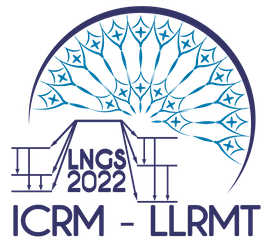Speaker
Description
Uncertainty estimation is an important aspect of method validation. Measurement uncertainty is also to be considered when decisions have to be made based on measurement results. Generally, uncertainty associated with nuclear counting analyses are attributed to two main components of uncertainty; one is related to sampling, the other to sample preparation and the subsequent nuclear counting. The component related to sample preparation and the measurement is commonly also evaluated in proficiency tests and hence allows a laboratory to evaluate its validity (e.g. in a test evaluating the Limit of Acceptable Precision). It is uncommon for radioactivity measurements (except for in-situ analysis) to consider sampling uncertainty in proficiency testing. The recent upgrade of ISO17025 however explicitly requires that testing laboratories determine the uncertainty related to sampling. This new requirement is especially important for laboratories involved in the radiological monitoring of the environment if they carry out their own sampling. In this Framework, this study presents an experimental approach based on a soil samples collection campaign and their analysis by gamma spectrometry with a view to determining the sampling uncertainty of the "soil" matrix.
Uncertainty related to sampling can be determined by evaluating measurement results obtained from controlled repetitive sampling in well-specified conditions e.g. using the dual split concept as described in the Eurachem-Citac guide on “Measurement uncertainty arising from sampling”. In order to determine the sampling uncertainty of a gamma spectrometric analysis in soil, three laboratories IRE (BE), SCK-CEN (BE) and IPH (BiH) started a joined initiative with the financial support of the Federal public service economy from Belgium (FPS Economy). The aim of the project was to determine sampling uncertainty for the sampling and analysis of a representative top layer, 1m² surface, of soil with a single sampling as is commonly used in the radiological monitoring programs of soil. This uncertainty estimation requires a well-known sampling target for which radionuclide specific radioactivity can be measured and is well above the detection limits of the analysis. Fallout of the Chernobyl accident in 1986 still gives measurable quantities of Cs-137 in soils in the Balkan peninsula. The sampling site is located in the central part of Bosnia and Herzegovina, 20 km south-west from Sarajevo, at Bjelasnica Mountain, where preliminary investigation showed Cs-137 content of a few hundreds of Becquerels per kg. The site selected for the sampling was subdivided into several adjacent lots according to a sampling scheme in order to obtain a homogeneous distribution between the different laboratories participating in this study. The laboratories used their own materials and methods for taking and analyzing the soil samples. For this study, 16 soil samples and 32 analyzes by gamma spectrometry were carried out by each laboratory.
The dual split sample method in combination with ANOVA was used to evaluate the sampling uncertainty of each participant. The comparison of the results of the different laboratories shows a good agreement between the average of the results of the laboratories. Moreover, it is clear that the uncertainty due to sampling significantly increases the total measurement uncertainty and that the contribution to the total uncertainty due to sampling is larger than the contribution due to the analysis. The results also reveal that there is no significant difference between the sampling uncertainty for the slightly different sampling techniques used by IRE, SCK-CEN and IPH and may be considered as typically for these sampling techniques and this sampling target.

